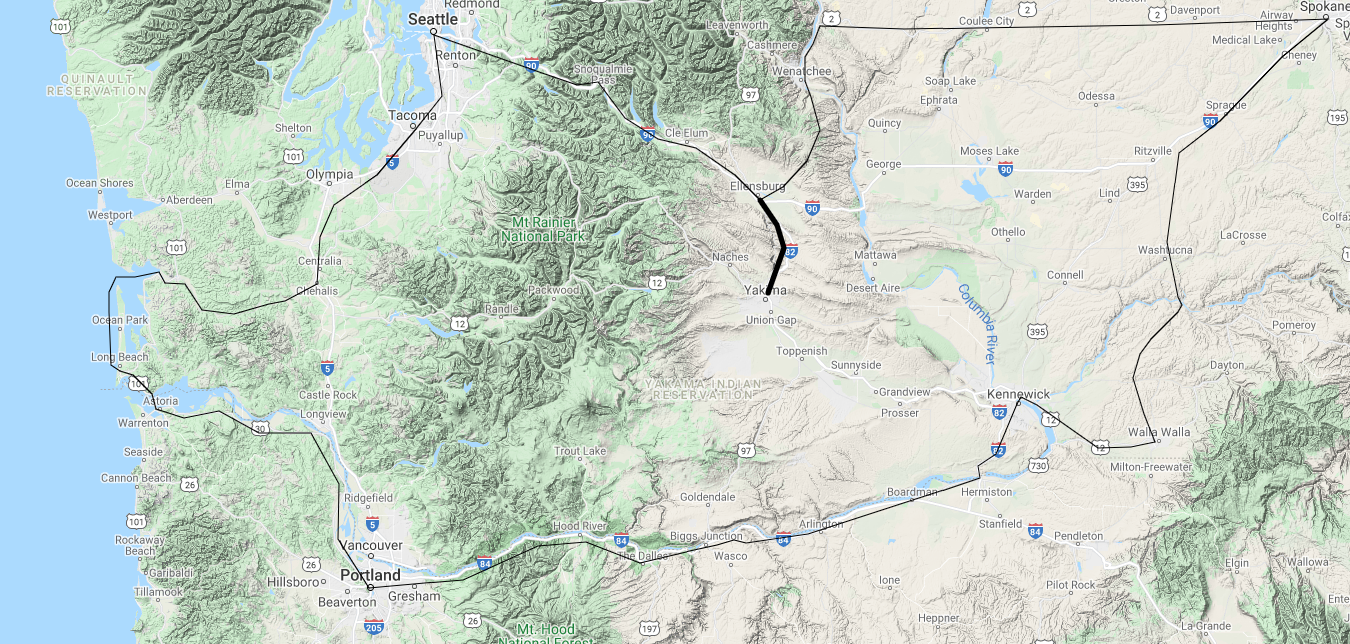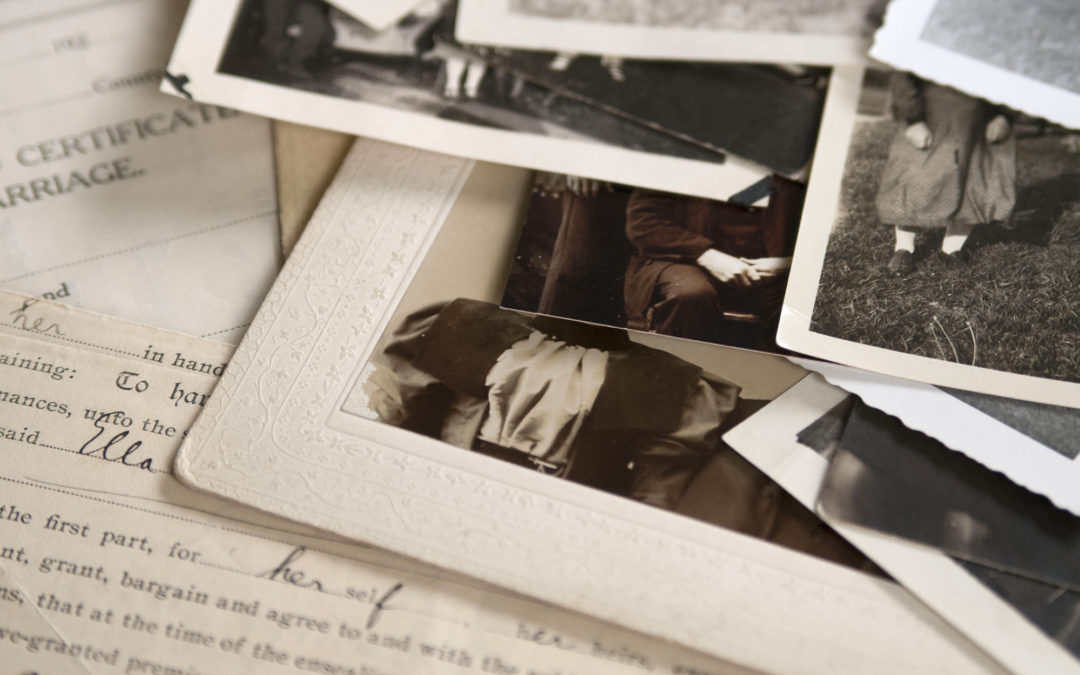By Librarian Alyssa of Omak
For This Week in History we are going to once more use our Online Resource for Washington Digital Newspaper to look at The Wenatchee World published August 31st, 1910. The article I located was a fun one to read and to map out. The title of the article is 8 Hours From Ellensburg, which is a simple headline for the article but the sub heading “Three young men in auto making run from coast to Spokane” made it sound like some sort of race, which wasn’t the case. When you think about 1910 you need to remember that there were no roads or highways at that time. The only way to travel was by dirt paths, which anyone who has gone off road before knows how rough that is even with our modern vehicles. Now imagine doing it in a Chalmer 30.
The story that went with this article is about three men — Vance Wolverton, who owned the Chalmer 30, Ralph Hayward, the driver, and Joe Stenstron. These men left Spokane and decided to take a very long road trip around Washington and northern Oregon. They started their journey on August 7th heading south to Walla Walla, then to Kennewick, before heading west to Portland, Oregon. The article describes their trouble, since there were no paved roads at the time, of them getting stuck in mud and sand. None of this deterred the men who were enjoying this trip. From Portland they decided to head to Astoria. This was something no one had ever done before, which caused some people in Portland to caution the men away from doing this. The men were determined and went forward with their plan and surprisingly did not run into much trouble. They explained that after dealing with the sands of the Columbia River, mud was easy to navigate and to get out of.
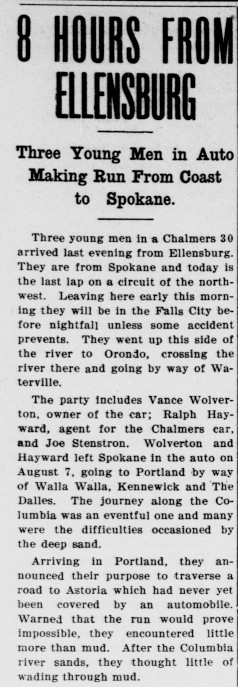
From there they went to Sea View where they met with Hayward’s parents. His father, Harry Hayward, was the pioneer of the first ticket agent for the Northern Pacific Railway. If you would like to read more about the building of the Northern Pacific Railway I highly recommend Across the Columbia plain : railroad expansion in the interior Northwest, 1885-1893 by Peter J. Lewty. From Sea View the car was shipped to Bend, Washington where they picked up their journey to start driving towards Chehalis then Seattle. An interesting little bit from the news article is that on their way to Chehalis they actually used the railroad to drive on for 6 miles. They of course had to pull off of the railroad whenever a train would come upon them and go into a ditch to avoid being hit.
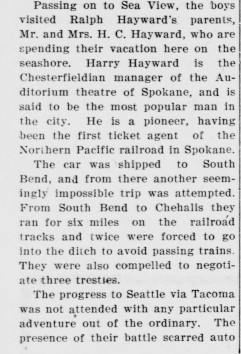
After the railroad their journey was less eventful to Seattle. The next challenge was going to be the Snoqualmie Pass. The Pass had only been conquered that year by a Brush vehicle driven by C.C. Griggs and J.A. Scamen, and a E.M. 30 automobile from Tacoma, which made it over twice. The men left Seattle for Ellensburg and 56 hours later made it to their destination with little trouble. Now think of this, today it takes a little under 2 hours to make that journey in our modern cars and modern roadways. The reason it took them so long was probably due to navigating the pass without any road in place for vehicles. This would make the roads bumpy and the drivers would want to be cautious to ensure they did not roll down the mountain side.
While in Ellensburg the men went to North Yakima to see some races before heading back north to head to Wenatchee. This is where the headline comes in, it took them 8 hours after leaving Ellensburg to get to Wenatchee. This was a record for the time period! Today it only takes about an hour and a half to make that drive. The men were not attempting to make any sort of records, they took their time enjoying the scenery of the area. The car also was loaded with camping gear, extra tires, and other supplies that they would need to make their journey. So the car wasn’t light by any means.
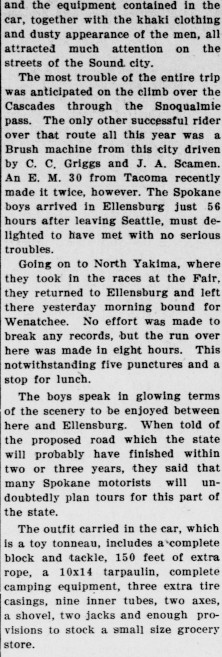
After Wenatchee the men left to head back towards Spokane. From this point on we do not know how their journey ended but a grand journey it was for the times. Nowadays we have roads that can lead us just about everywhere. This is a luxury we have adopted as motor vehicles became our main form of transportation. Here is a map I created to figure out how their journey must have appeared. I used Google to create it and made sure to follow natural formations of the land for ease of travel, since I doubt they would willingly go over rocky hills if there was an easier way around. If you would like to read more about early automobiles I recommend you read Life of the Automobile: A History of the Motorcar by Steven Parissian.
